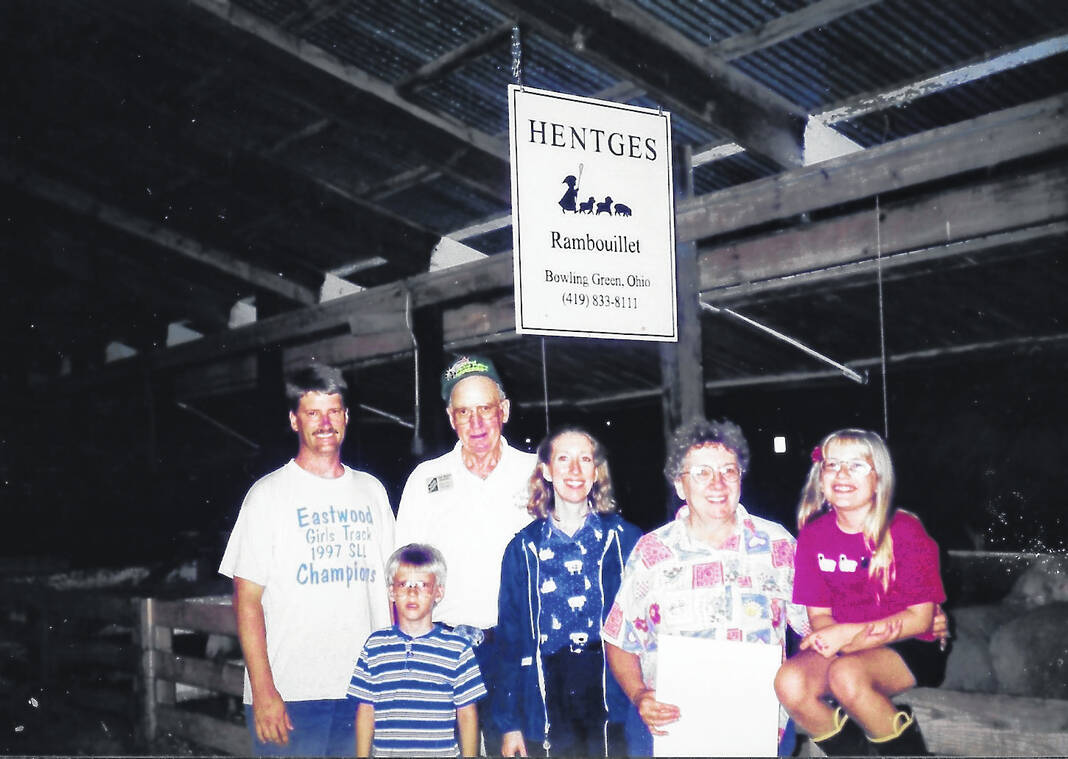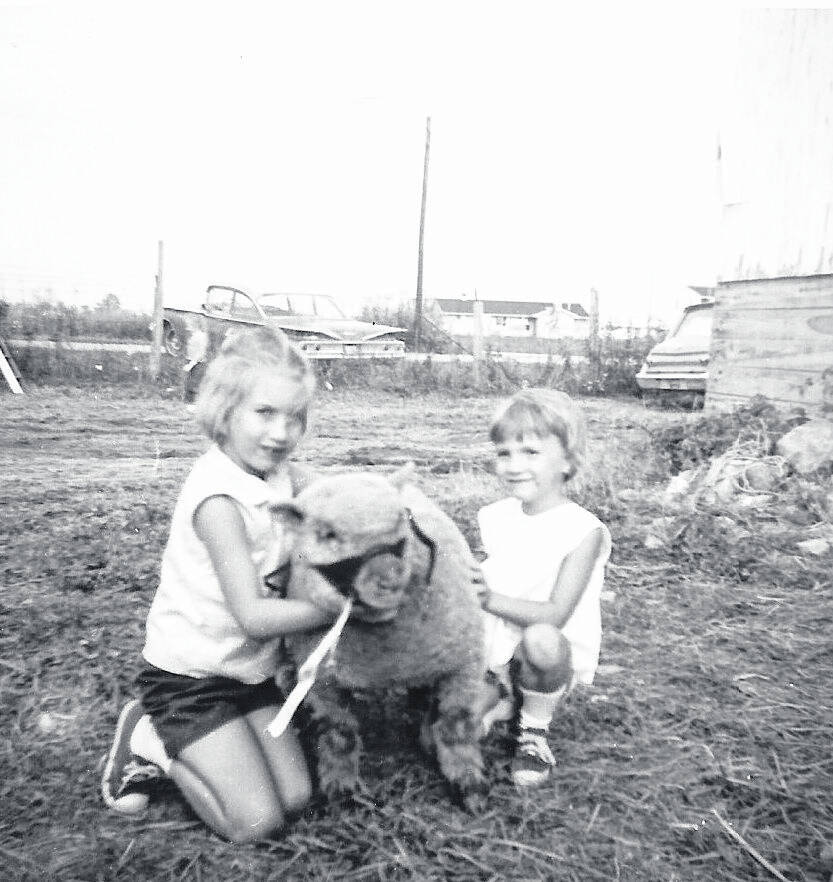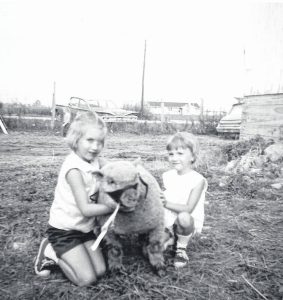
Deanne Corken’s fammily, including her husband, son, dad, sister, mom, and daughter from 1998. It was taken next to the sheep pens in the sheep barn.

Bowling Green resident Deanne Corken has been involved with the Wood County Fair practically since she was born.
“Our family has been showing sheep there for many, many years,” said the now 61 year-old Corken. “I can remember gathering feathers from the area that used to house the poultry tent, where the sheep barn is now located.”

Corken said the site of the poultry tent is where the sheep barn is currently located.
“My sister, Dawn, and I were given a Southdown sheep by our grandfather,” she said, referring to a British breed of the animal. Of course, we lived on a farm at the time.”
Corken said she has many fond memories of the Wood County Fair, dating back to those very early days of her childhood.
“I can remember that as soon as Christmas was over, we would start thinking about the fair.”
Corken recalls both sides of her family — the Brinkers and the Hentges — were deeply involved in the fair.
“Our grandfathers were big believers in the fair.”
Her father, Darrell Hentges, became a fair board member and served on that board until he passed away in 2013. Corken joined the fair board a month after her father died.
It was only natural that Corken became chairman of the History Committee as she had been collecting information on the fair for many years.
“I volunteered to take that position because I already had so many materials and photos.”
Some of the old fair books she has are interesting reading for Corken.
“In 1927, the draft horse barn caught on fire. They saved the animals but lost most of the barn.”
The fair initially ran from 1851 to 1927, when for various reasons the fair stopped.
“For a couple of years, they had some pretty bad weather. Then, World War II broke out, and then they had to compete with several other festivals that were going on,” Corken said.
The Wood County Fair was not always held in Bowling Green, Corken said. At various times, it was held in Portage, Tontogony and Perrysburg.
“In fact, for a couple of years, there were two county fairs competing with each other. In the early 1880s, there was one in Tontogony and one in Bowling Green, ran by two different organizations.”
Around 1952, Corken said, is when the fair moved from a city park to the area where the fairgrounds is presently located.
Most of the exhibits were housed in tents prior to the construction of many buildings on the fairgrounds.
“When there would be a strong storm go through the area, the tents would blow down,” Corken recalled. “That’s one of the reasons they started putting up buildings.”
When fair officials knew they were about to began a big period of erecting buildings, Corken’s father and two of her grandfathers traveled to various areas of Ohio and even to other states to get ideas for the construction of a sheep barn for Wood County.
Corken remembers the sheep barn being painted blue in the early days.
“I remember that because if you got lost, you could always look for the blue building. You knew when you saw the blue building, that was the sheep barn. It hasn’t been blue for a long time. It’s now painted white.”
Over the years, the junior fair has grown tremendously, Corken said.
“I think that’s one of the greatest (achievements) over the past several years. The livestock (events) have a lot more participation now, too. Livestock events are very strong now,” Corken said.
She said the overall quality of the fair exhibits has been improved.
Corken said the Wood County Historical Society is putting on a re-enactment of the Wood County Fair.

